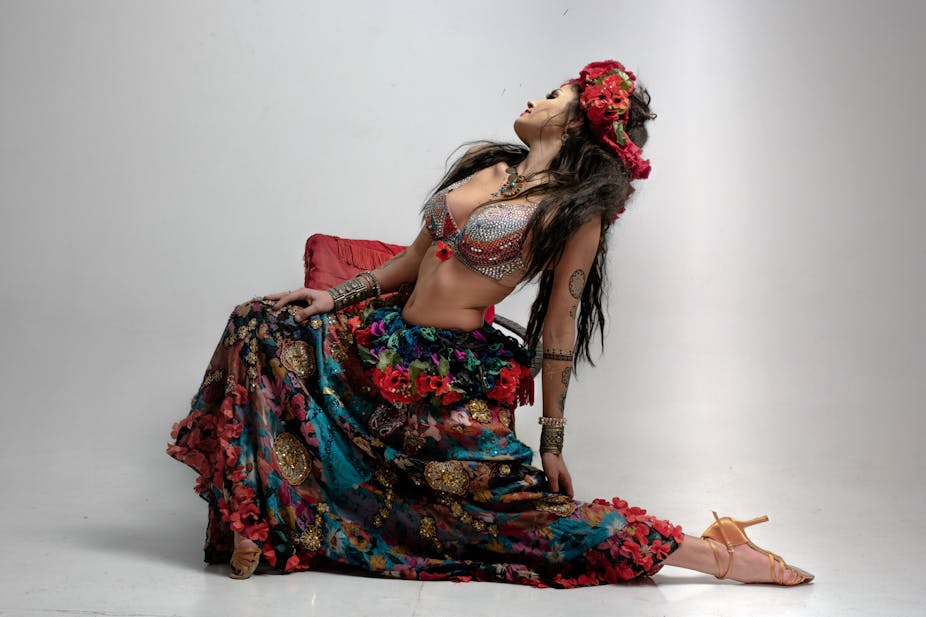Dance has been a significant part of human culture since the very earliest civilisations. While today it is done more for entertainment purposes, its use can be traced back many thousands of years to ancient ceremonies and rituals.
For as long as they have been moving, dancers have always borrowed from other forms of movement, using them as inspiration to evolve their own work. But in recent years, when too much inspiration is taken, critics have started accusing dancers of cultural appropriation.
Take belly dance for example. One of the world’s oldest forms of dance, it originated in Middle Eastern and Northern African countries, such as Egypt, Turkey and Lebanon, but is now danced around the world.
Belly dancing isn’t just one type of dance: there is no single set of moves to follow in time to a beat. Though there are certain moves that are similar – focusing on the hips, chest and shoulders being moved in isolation from the rest of the body – each culture has its own version of a belly dance.
In Egypt, for example, belly dancing is “raqs sharqi”, or “dance of the east”. Studying belly dance in Egypt is akin to learning tango in Argentina, samba in Brazil, or the martial art taekwondo in Korea: it is a cultural home that dancers flock to for expert tuition.
Egyptian belly dance is quite earthy, relaxed, and focuses on small movements of the torso. Traditionally, it is danced solo with live music, and the dancer moves in accordance with how the music makes them feel and their connection with the audience – a feature known as “tarab”, which translates as “ecstasy” or “enchantment”.
Today raqs sharqi is enjoyed all over the world – but not everyone is happy about that. There have been claims of appropriation, and concerns that the true essence of Egyptian belly dancing is being lost to commercialisation. A hotel in Western Europe, for example, could choose to hire a dancer who has no knowledge of Egyptian dance to perform an evening of belly dance in their restaurant, while marketing the dance as authentically Egyptian, for commercial gain.
The problem with this “appropriation” is that some fear it misrepresents the Egyptian cultural heritage. But all types of belly dancing combine numerous elements – movement, dancers, costumes, props and music – for a single performance, so specifically defining its cultural significance is no easy task, particularly when it is comparable to other forms of movement.
In addition, like so many other forms of dance, raqs sharqi has evolved to incorporate elements of other dance disciplines. When performances were developed for Egyptian movies, for example, elements of ballet and ballroom dance were picked up. And so arises another problem: just who is to say what constitutes borrowing, and the development of a dance, and what makes for cultural appropriation?
Appropriation or appreciation
Advice on how one goes about balancing the enjoyment of dance with respect for its cultural roots varies greatly depending on who you ask. Some will say that dances should be shared, and the fact that dancers are embracing new movements around the world celebrated, while others take a stricter view, saying certain dance styles should only be performed by those of certain heritage, in an approved manner and setting.
Whichever view you take, it is clear that effort could be made to value a dance’s cultural roots. This could be as simple as saying that a performance was inspired by a type of dance, rather than a representation of it. Alternatively, performers could make a little more effort to ensure they are connecting with and representing a dance according to its true traditions and cultural heritage.
Greater thought could also go into the use of certain terms like “traditional” or “authentic”. Here governments and organisations such as UNESCO have a role to play in helping to protect heritage, listing more types of dance on cultural registers, for example, and explaining their importance.
But ultimately it is still important to allow heritage to be flexible, and to incorporate change and give people the freedom to create. Mash-ups like Hiplet – a combination of hip-hop and ballet – have shown just how vital dance exploration can be to encourage new dancers to take up the moves, and keep them alive.

